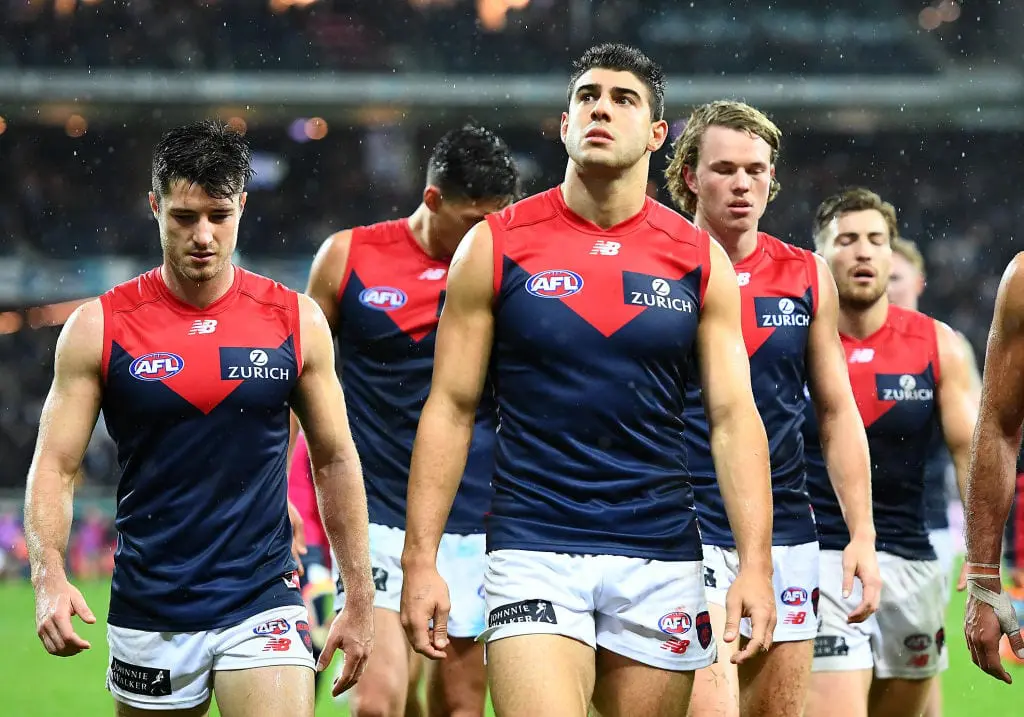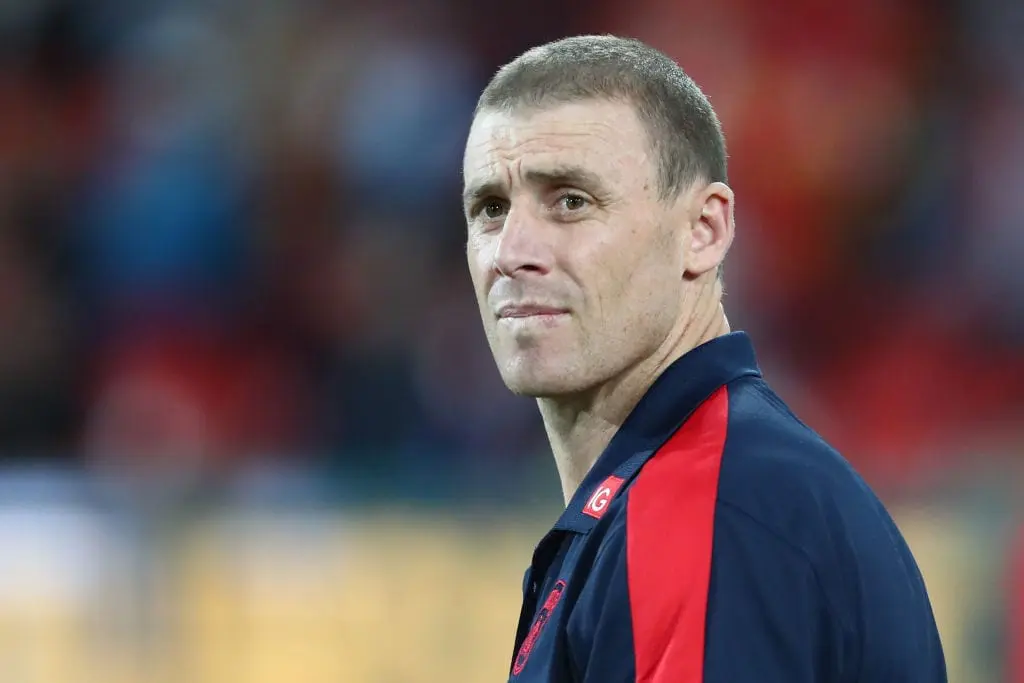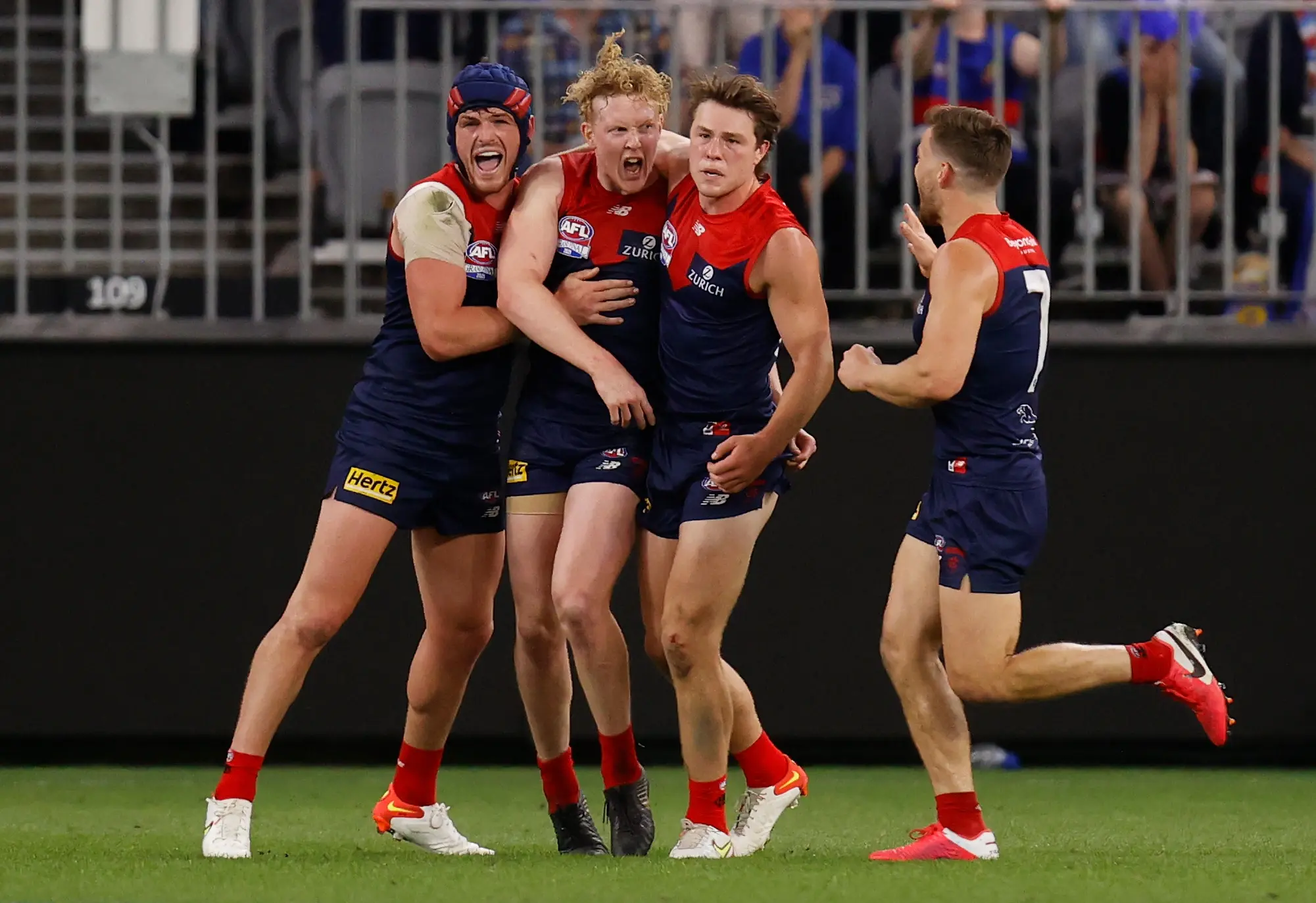Saturday, April 6, 2013.
A shattering reign of umbrage and abuse hurls down from the Melbourne supporters after witnessing one of the club's worst defeats - a 148-point shellacking to Essendon. The night isn't about the Essendon clinic, but instead Melbourne, who hit an all-time low.
Through the constant rumblings, a Demons fan sitting close to the players' race is despondent as a fan can be. No words can describe the despair on his face, only watching him nearly burst into tears.
As all 22 players quickly seek to get down the race as soon as possible, their fans don't relent in their continuous frustrations. Some lean their necks out to vent one final word of dissent, with others joining the chorus. No team plays to be deliberately hammered from pillar to post, but that's the position Melbourne found themselves in. Even before this fateful night, the cascading fall of a historic football club only traces back two years earlier.
The day was Saturday, July 30, 2011.
Melbourne is on the receiving end of the second-worst loss in VFL/AFL history, an 186-point battering to eventual premiers Geelong.
Listless is the best term to describe the performance. Other descriptions would include witches' hats - arguably the worst description any team or player dreads to hear.
In an interview on Uncovered in 2020, then-Demons skipper Brad Green said the shame and embarrassment had a detrimental effect on the club, ultimately leading to the sacking of coach Dean Bailey.
“At the time when you've got a playing group totally united behind Dean Bailey and you're fighting tooth and nail - and people would say we didn't fight tooth and nail in that Geelong game and I've got no comeback for that because the scoreboard is the scoreboard,” Green said.
“I'm still ashamed of the game today. We, and I, definitely take full responsibility for Dean getting sacked and the way the club went down was something that still doesn't sit right with me to this day. I feel sick about it really. It cut deep.”
What was to follow would be hammering after hammering in season 2012. That campaign saw the club only win four games, finishing 16th with a lowly percentage of 67.49% - only ahead of new expansion teams Gold Coast and GWS.
The side's average losing margin was 50.7 points, including two 100-point hidings to West Coast and Sydney.
If season 2012 was the beginning of the end, then season 2013 would be the final encore. The club would only win two games against GWS and the Western Bulldogs, whilst losing by an average margin of 64 points.
In the depths of despair, there needed to be a messiah to unite a downtrodden club back into the land of prosperity.
Enter Paul Roos.
After a decorated 356-game career, the no-nonsense Roos led the Sydney Swans to a club drought-breaking flag in 2005 after 72 long years behind a stringent defensive game plan.
His main task would be to strip the Demons from the bottom up into a competitive unit once again. The first point of order would be in the 2013 National Draft. With the club's first pick (ninth overall) they selected Christian Salem - who has gone on to be an integral piece of their current side.
The Demons would draft Jayden Hunt (now at West Coast), whilst picking up hard nut James Harmes through the rookie draft and the ever-reliable Neville Jetta, who credited Roos for reviving his career.
Whilst only winning four games in 2014 under Roos, the competitiveness was there with a drastic decline in their losing margin - 36.8 points. Brave wins over Carlton, Adelaide, and Essendon were recorded - with Salem booting the match-winning goal in the latter.
That off-season is where Melbourne landed their core spine of players at the AFL National Draft on November 27, 2014. Those players: Christian Petracca and Angus Brayshaw with picks 2 and 3, and the hard-working Alex Neal-Bullen.
Season 2015 saw the club continue to improve, registering seven wins and finishing 13th on the ladder. Come the draft, Melbourne landed their next promising midfielder in ball-magnet Clayton Oliver with the fourth overall pick. From the outset against GWS, Oliver has seamlessly made his mark, being a four-time best and fairest winner.
In Roos' final season in charge (2016), the Demons continued their incline up the ladder, finishing 11th with 10 wins despite ending on a sour note with a 111-point hiding to Geelong. Not an omen Demons fans were after following the previous event five years earlier. But the foundations for a return to September football were in motion.

After the coaching handover from Roos to two-time Adelaide premiership player Simon Goodwin, Melbourne had firm aspirations of reaching finals for the first time since 2006.
Heading into 2017, most football media writers and broadcasters pencilled Melbourne to finish top eight. By the end of Round 18, the Demons had finals within their grasp after holding Port Adelaide at bay to prevail by 23 points.
Melbourne was seventh and percentage ahead of West Coast and the Western Bulldogs, and a game clear of Essendon. Ultimately, it came down to the final round against Collingwood. Win and the finals drought would be over. Lose and West Coast win by 20 or more points over Adelaide, and their September drought would continue.
It would be the latter.
Melbourne was hit by a Magpies avalanche, conceding six of the first seven goals, and despite getting within eight points midway through the final term, they got no closer.
Pure devastation.
Through the heartbreak came renewed optimism in 2018. Its core continued its upward trend with ruckman Max Gawn enjoying another All-Australian campaign, Oliver continuing to blossom, Brayshaw finishing third in the Brownlow Medal count and Petracca's ascent into becoming the next superstar of the game. Playing with flair, precision, and on the back of a battering contested style game, the Demons, at last, broke the long-awaited finals hoodoo.
During the season Melbourne had many stirring victories, toppling Adelaide in Adelaide and defeating West Coast in hostile territory at Optus Stadium to confirm a September berth. Nothing though could anticipate what the red and blue were capable of doing come finals.
Behind the raucous crowds of over 90,000 at the MCG, Melbourne prevailed against the odds, defeating Geelong and then Hawthorn to book a preliminary final against West Coast. Although the dream run to the grand final came to a crashing halt against the Eagles, optimism amongst the group to go one better began to gather steam.
Even higher expectations were in store for Melbourne in 2019, with most within the AFL landscape predicting a top-four finish. Realistic, yes. In practice, a different story.

Unfortunately, the season went pear-shaped from the opening round against Port Adelaide. And it would not get any better. An alarming trend was shaping up and the same trend kept coming game after game: Inside 50 entries.
Inside 50s were not the problem for Melbourne (53.9 per game). However, the service of delivery left a lot to be desired. Not helping would be injuries to key personnel, including recruit Steven May, plus several players undergoing off-season surgery. Cultivation of setbacks and wobbly results saw Melbourne slump from a preliminary final finish the year before to a 17th-place finish.
Identically reminiscent of seasons 1998 and 1999.
Through the darkness came a ray of light. Season 2021 had everything riding on it, especially the future of coach Simon Goodwin if the club did not make the finals. Those hovering doubts were immediately squashed behind a reinvigorated playing group and the stellar play of Petracca.
Melbourne won their opening nine games to start the season for the first time since 1956. The Demons had weapons everywhere with the stellar backline led by May and Jake Lever, the midfield in superstar ruckman Gawn, Oliver, Jack Viney, and Petracca, and a forward group with Tom McDonald, the exciting Kysaiah Pickett, and the lively Bayley Fritsch.
The other weapon of their resurgence: High-performance guru Darren Burgess.
Well-renowned for his work with Arsenal and Liverpool in the English Premier League, Burgess transformed Port Adelaide into the fittest side in the AFL. And he did the same with Melbourne, pushing the players under a strenuous training program. The results were evident, with the team covering the ground far better than two years ago. As a reward for an excellent campaign, Melbourne secured the minor premiership after a thrilling post-siren victory over Geelong thanks to a Gawn set-shot.
The Demons' run towards an elusive flag began convincingly with a comfortable qualifying final win over Brisbane, then an 83-point demolition job of Geelong to book a grand final spot for the first time since 2000.
After many arduous years of struggle, the day had arrived. One which comes once in a lifetime for many footballers.
Saturday, September 25, 2021. A blue sky and not an ounce of cloud awaited the players as they walk up the Optus Stadium tunnel for the biggest game of their football careers.
The excitement amongst Melbourne supporters is paramount. The anticipation of seeing their team hoist the premiership in two hours is nerve-racking.
In the early stages, Melbourne jumped all over the Western Bulldogs, taking a 21-point lead at quarter-time. However, the Bulldogs wrestled back the momentum with skipper Marcus Bontempelli playing out of his skin. His impact swung the contest in the Bulldogs' favour. When he kicked his third goal to push the lead out to 19 points, 12 minutes into the third term, the same recurring thoughts must have been circulating amongst Melbourne players and their loyal fans.
'Have we blown our chance?'
'Will this be our only crack at the big dance?'
But these Demons refused to lie down. What was to occur would be one of the most scintillating momentum shifts in recent finals history.

Getting back on top around the coalface and clearances, an avalanche of red and blue hit the Bulldogs out of Optus Stadium, landing seven goals in 16 minutes, including three inside three minutes, capped off by Oliver's beautiful running goal.
As the goals kept flowing, elation amongst the Melbourne contingent shed a thousand emotions. From the darkness of a decade before to being minutes away from winning their first flag since 1964. As the reverberating sound of the siren rang around the stadium, it was mission complete.
The greatest prize every aspiring footballer dreams of came true for all 22 Melbourne players who had been through all the ups and downs.
The core of the team is well in their prime. Oliver, Petracca, Brayshaw, Lever, May, Viney, Salem, Fritsch and Harmes - all have many years left. With success comes a rise in memberships. In season 2022, Melbourne broke the 60,000-member mark for the first time with 66,484, surpassing the 53,188 from their drought-breaking 2021 premiership.
The club has never been in a stronger position to contend for more silverware.
Who knows, season 2023 might deliver a second flag in three seasons.






